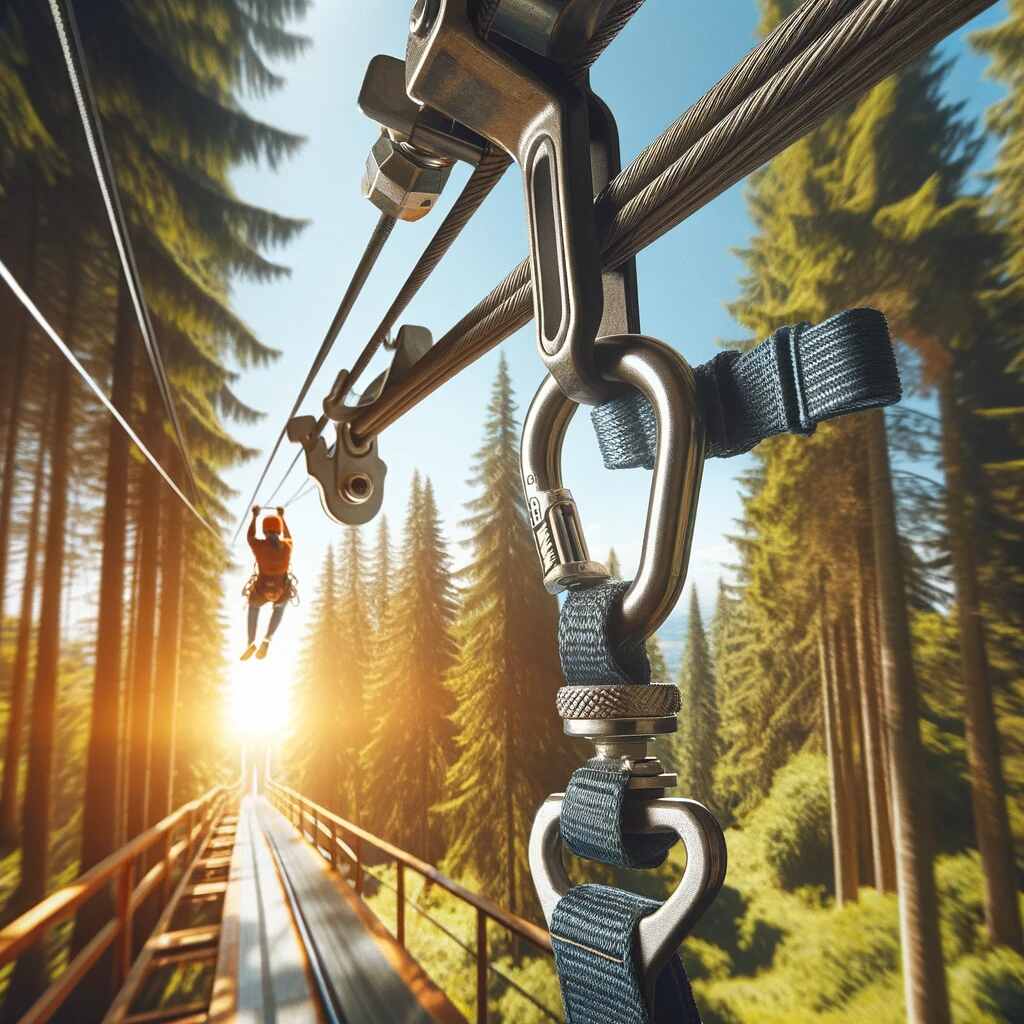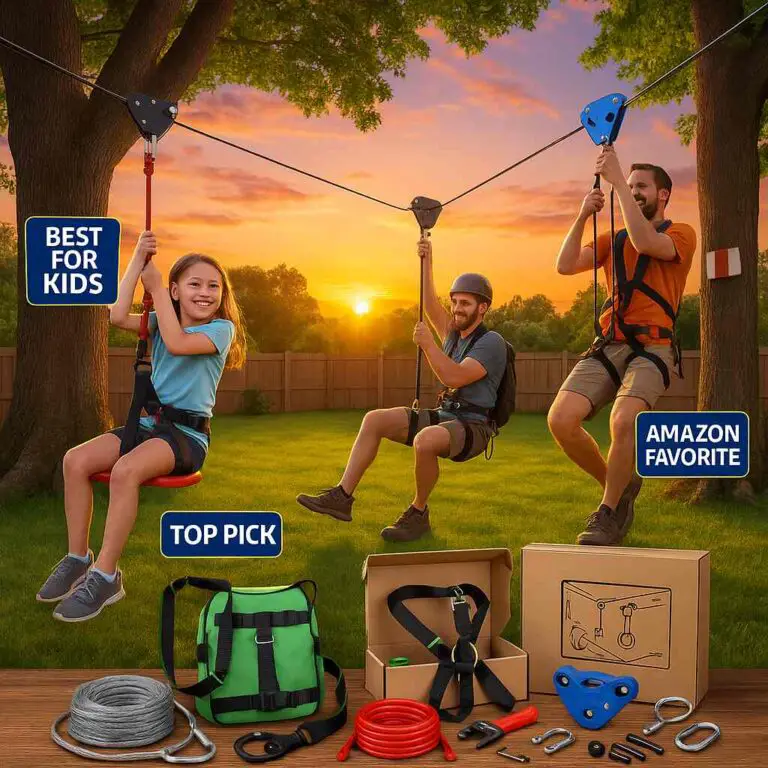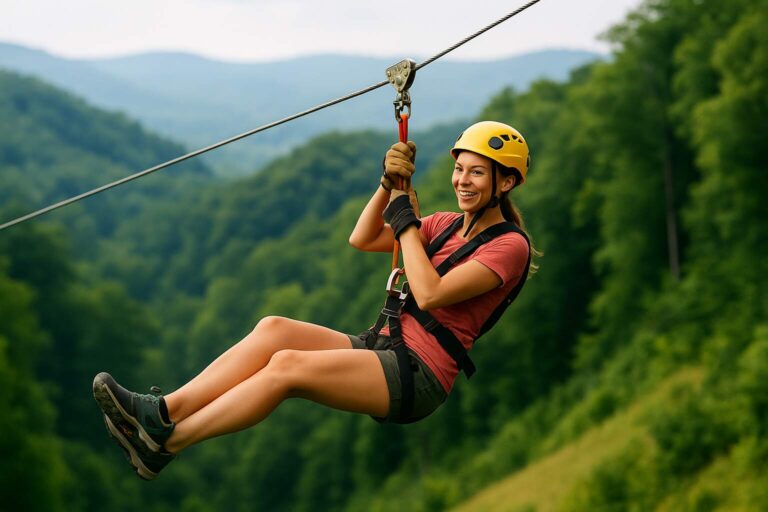Ziplining has gained immense popularity as an adventure sport, offering participants an exhilarating experience soaring above the treetops. However, like any adventure activity, ziplining comes with concerns about safety. One of the most common questions people have when considering ziplining is whether ziplines can break.
Yes, ziplines can break, but it’s extremely rare. Ziplines are designed with safety in mind, using high-strength materials and regular inspections. Breakages are typically caused by equipment failure, poor maintenance, or adverse weather conditions.
In this article, we will delve into the mechanics of ziplines, their strength, safety measures, and what you can do to ensure a safe and enjoyable ziplining experience.
Understanding the Mechanics of a Zipline
To address concerns about zipline safety, it’s crucial to grasp how ziplines function. A zipline typically consists of a cable stretched between two points, often positioned high above the ground. Riders, securely harnessed to the cable, rely on gravity to glide along the line. The cable is supported by a system of poles or trees, firmly anchored to the ground. Modern ziplines have come a long way in terms of technology and safety.
How Strong Are Ziplines?
The strength of a zipline varies depending on the size and materials used for the cable. However, it’s important to note that the average ziplining cable is robust and can comfortably hold several thousand pounds. This strength is a testament to the rigorous safety standards upheld by zipline operators.
The Safety Measures in Place
Safety is paramount for zipline operators, and they implement numerous measures to ensure the well-being of riders. Before embarking on a ziplining adventure, participants are required to attend a comprehensive safety briefing. During this briefing, they receive instruction on how to properly use the equipment and are educated about potential risks associated with the activity. Riders are also equipped with essential safety gear, including helmets and harnesses.
The zipline cable itself is typically constructed from high-strength steel wire or synthetic fibers, designed to support multiple times the weight of a rider. To further bolster safety, zipline cables are subject to regular inspections to confirm their condition and ability to safely support riders. Reputable zipline companies are committed to preventing accidents related to zipline breakage.
What Can Cause a Zipline to Break?
While ziplines are generally considered safe, instances of zipline breakage have occurred. The most common causes of zipline failure are equipment malfunctions or human error. Equipment failures may transpire when the cable is not adequately maintained, or when riders fail to adhere to safety protocols.
Weather conditions can also influence zipline safety. Heavy rain or strong winds have the potential to damage the cable or support structure, increasing the risk of a zipline failure. Responsible zipline operators are highly cautious about conducting activities in adverse weather conditions and will promptly close their courses if safety is compromised. Trustworthy zipline companies prioritize the safety of their customers and will never expose riders to unsafe conditions.
Ensuring Your Safety
While zipline operators go to great lengths to ensure rider safety, there are steps you can take to further safeguard your ziplining experience:
- Choose a Reputable Operator: Prioritize zipline operators with a stellar safety record and positive reviews from previous riders. Investigate whether the operator has a history of incidents or safety-related issues.
- Follow Safety Protocols: Always adhere to the safety protocols provided by the zipline operator. This includes wearing the safety gear provided and attentively following the instructions given by the staff.
The Risks of Ziplining
In today’s world with modern technology and stringent safety standards, the primary risks associated with ziplining are related to user errors and non-compliance with safety guidelines. The possibility of a zipline breaking should be a distant concern. The most effective way to ensure a safe ziplining experience is to attentively follow instructions provided by experienced guides.
Conclusion
In summary, ziplines are remarkably safe with the advancements in modern technology and rigorous safety measures implemented by zipline operators. While accidents can occur in any adventurous activity, they are rare in ziplining.
By selecting a reputable zipline operator, adhering to safety protocols, and taking personal responsibility for your actions, you can virtually eliminate the risk of a zipline breakage. Ziplining remains a thrilling and secure adventure activity suitable for individuals of all ages, offering the chance to enjoy breathtaking views and the sensation of flying through the air.








